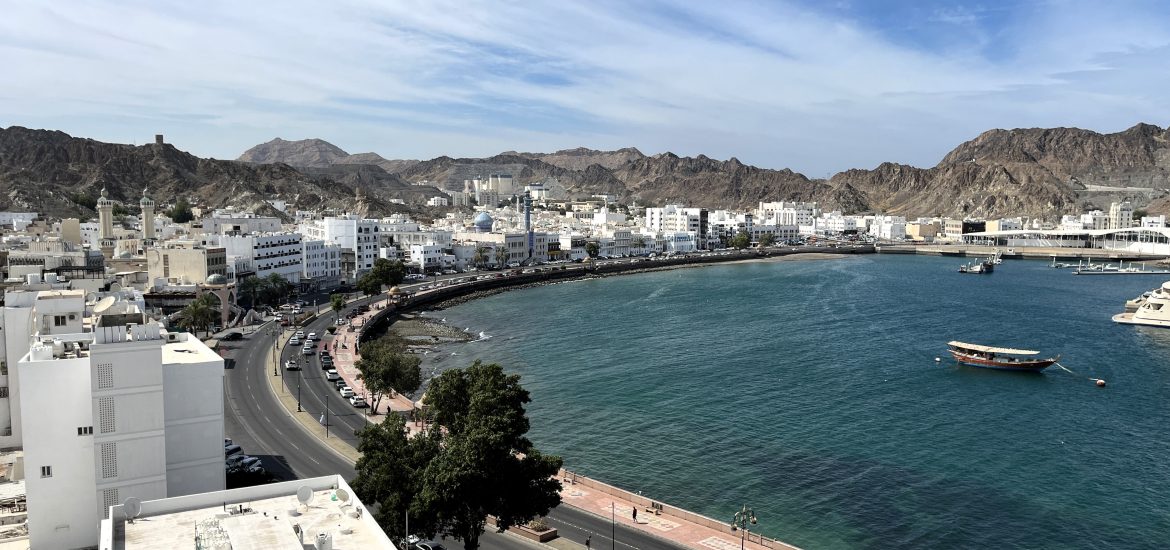Oman, a lesser-known jewel on the Arabian coast, is a truly unique and diverse destination. Dreamy beaches with pristine seas, a modern capital, historical cities, lush oases, refreshing wadis, picturesque dunes, and colorful souqs… And the best part? You don’t need long travel days to experience it all. We rented a car and spent an unforgettable 9 days exploring this beautiful country — and little Gaja loved it too!
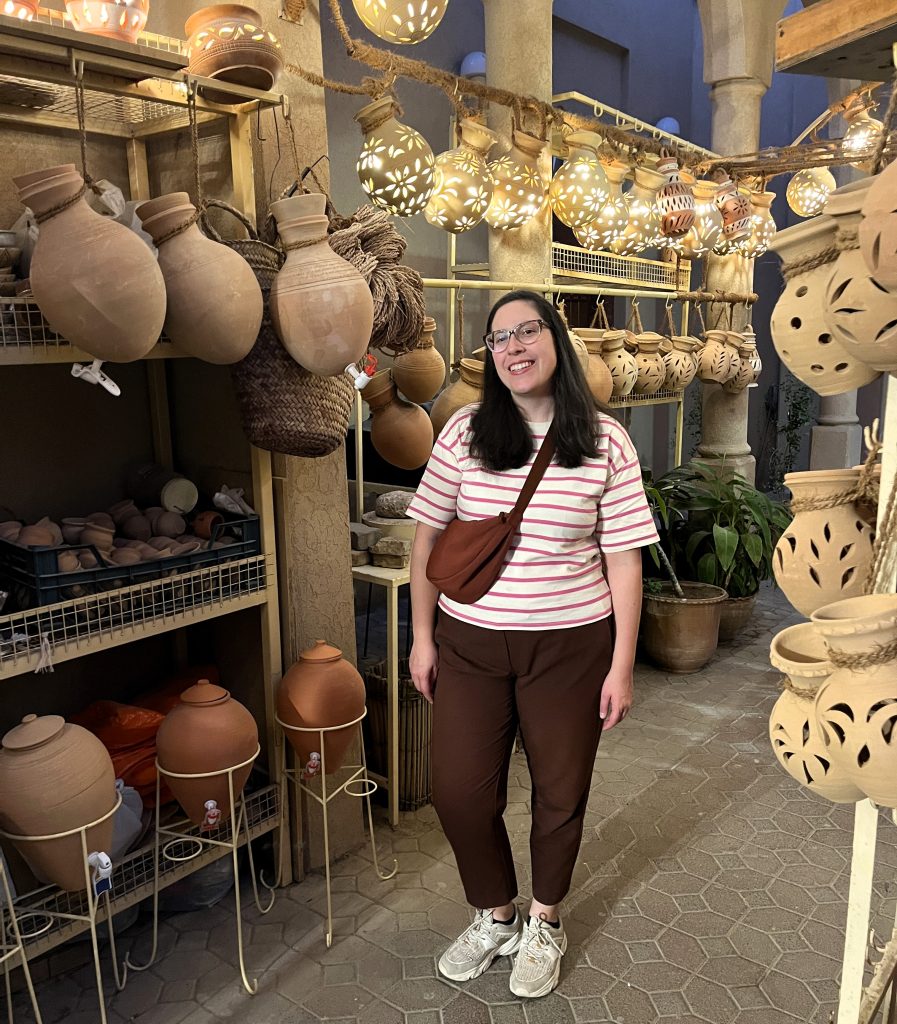
DAY 1: Muscat
After a late-night arrival in Oman’s capital, Muscat, we started our first day exploring the city’s historical center – Muttrah. We walked along its seaside promenade, with nice views of the royal yacht. We climbed up to Muttrah Fort for an amazing view of this part of the city. And also explored some of the backstreets. We visited Muttrah Souq (pro tip: visit at midday for no crowds), admired the Muttrah Central Mosque from the outside (as non-Muslim you can only visit Sultan Qaboos Grand Mosque), and peeked into the Fish Market. Of course, we also found a park with a playground for Gaja. At Riyam Park, there are playgrounds for every age, and even a swing with a view.
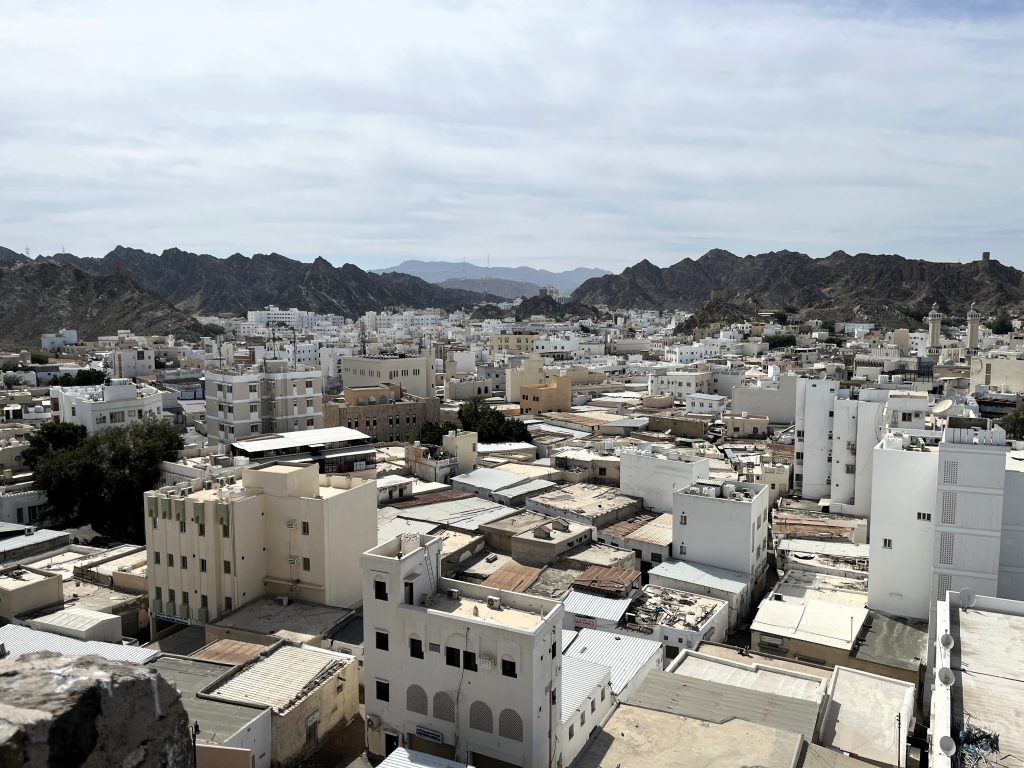
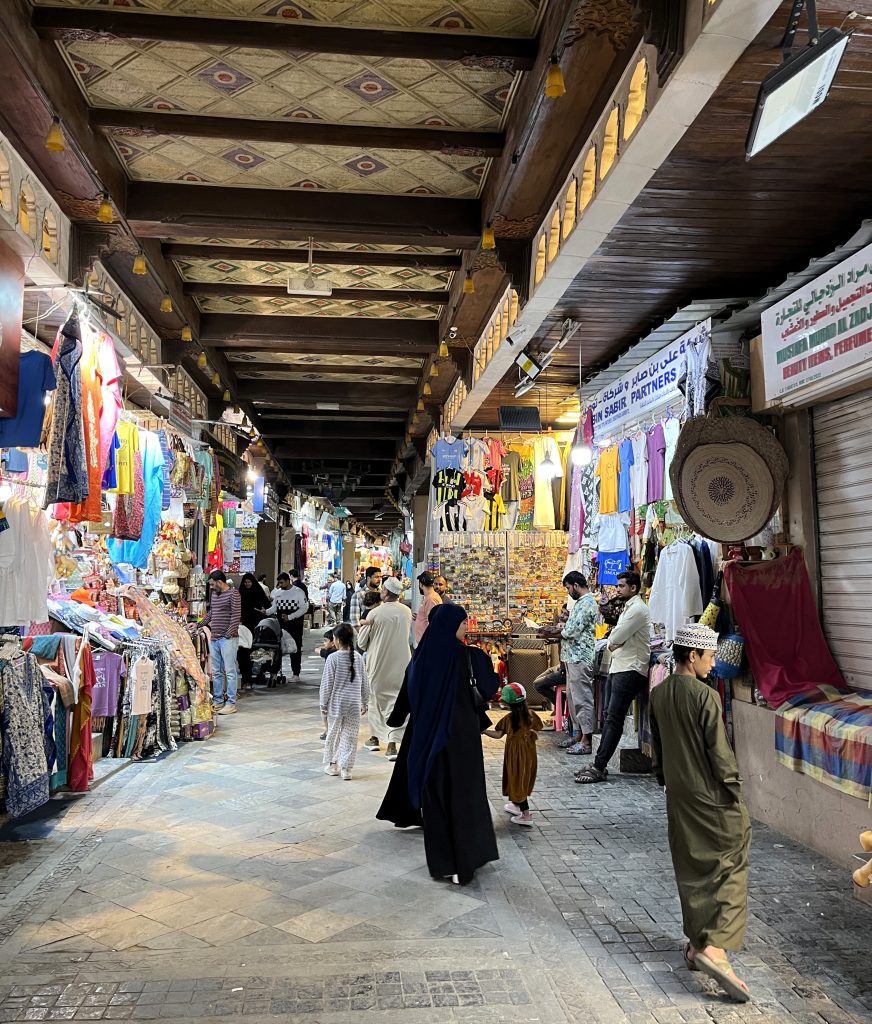
We stayed in one of the modern parts of Muscat and admired its wide, green streets while driving around. Local public transport here is pretty scarce, so renting a car is a must. The city skyline is also quite special, as there are no skyscrapers. Officials believe that tall buildings would disturb the balance of the natural surroundings. This is why the architecture is designed to preserve the natural views. There are also many modern shopping centers in the capital, which serve as a great escape from the summer heat.
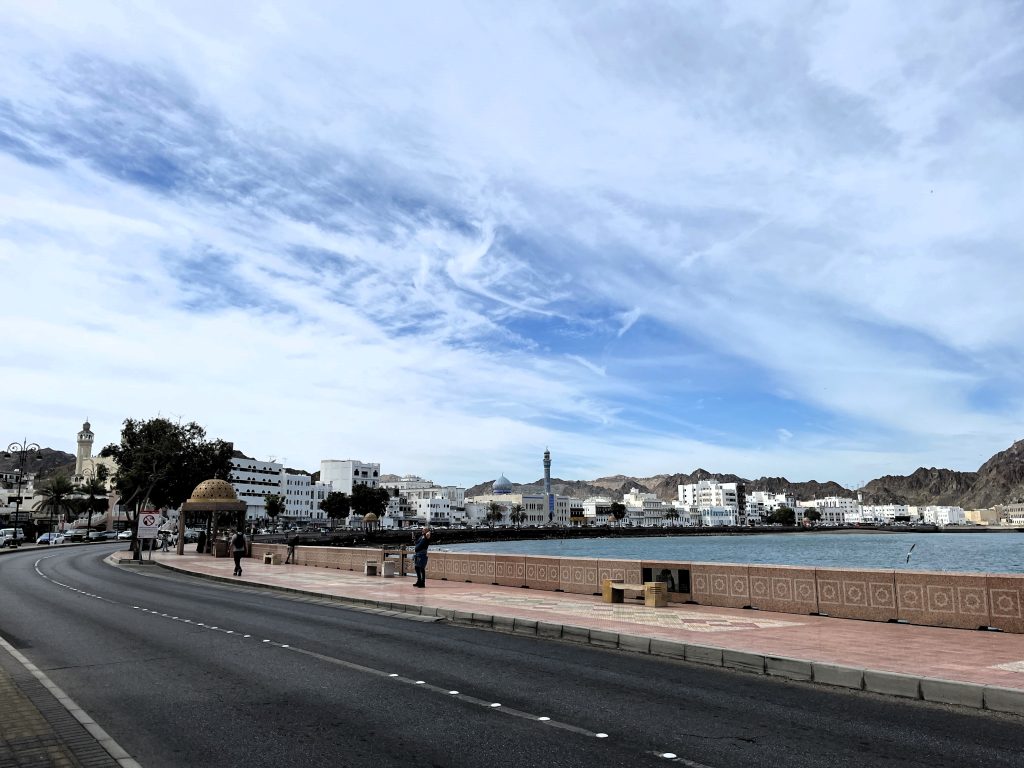
Where to eat in Muscat?
We more than loved the food at:
- Bait Al Luban – Delicious typical Omani food in a traditional setting. Pro tip: make a reservation before your visit.
- Aroos Al Bahar – Amazing seafood restaurant.
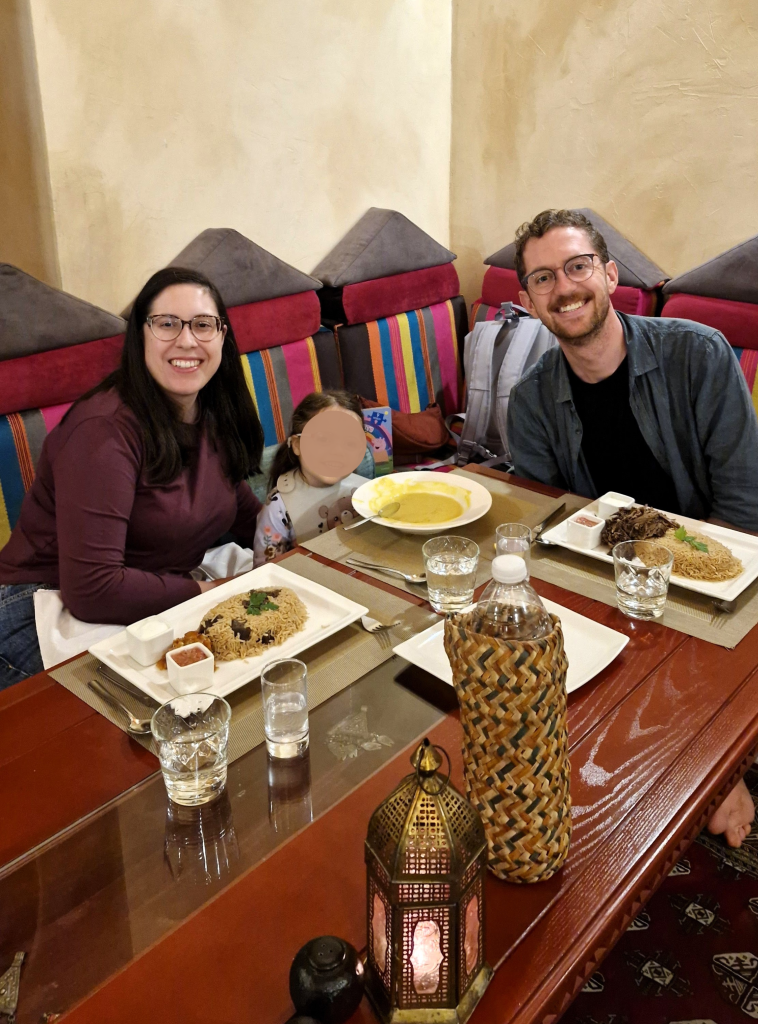
DAY 2: Day trip to Daymaniyat Islands
Just a 45-minute boat ride from the modern Al Mouj Marina—sometimes in the company of playful dolphins—and you arrive in paradise. Nine small islands, known as the Daymaniyat Islands, are surrounded by stunning turquoise-green waters and coral reefs. This makes them a dream destination for snorkeling and relaxing on pristine white-sand beaches. Tip for parents: bring a bucket and shovel—your little ones will love playing in the soft sand. The islands are also an important nesting site for turtles. Because of this, visitors are only allowed to set foot on the islands between November and April. The rest of the year is reserved for turtle nesting. However, you can swim with turtles in the surrounding waters year-round.
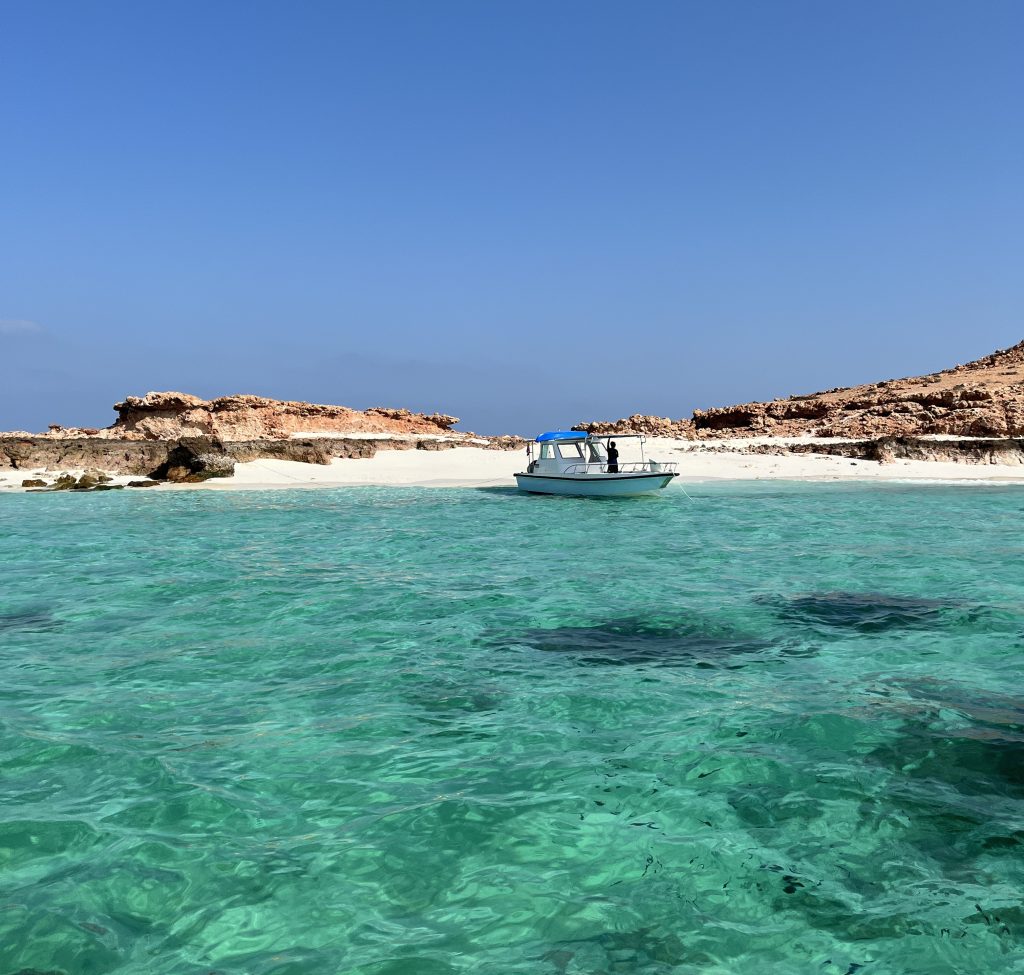
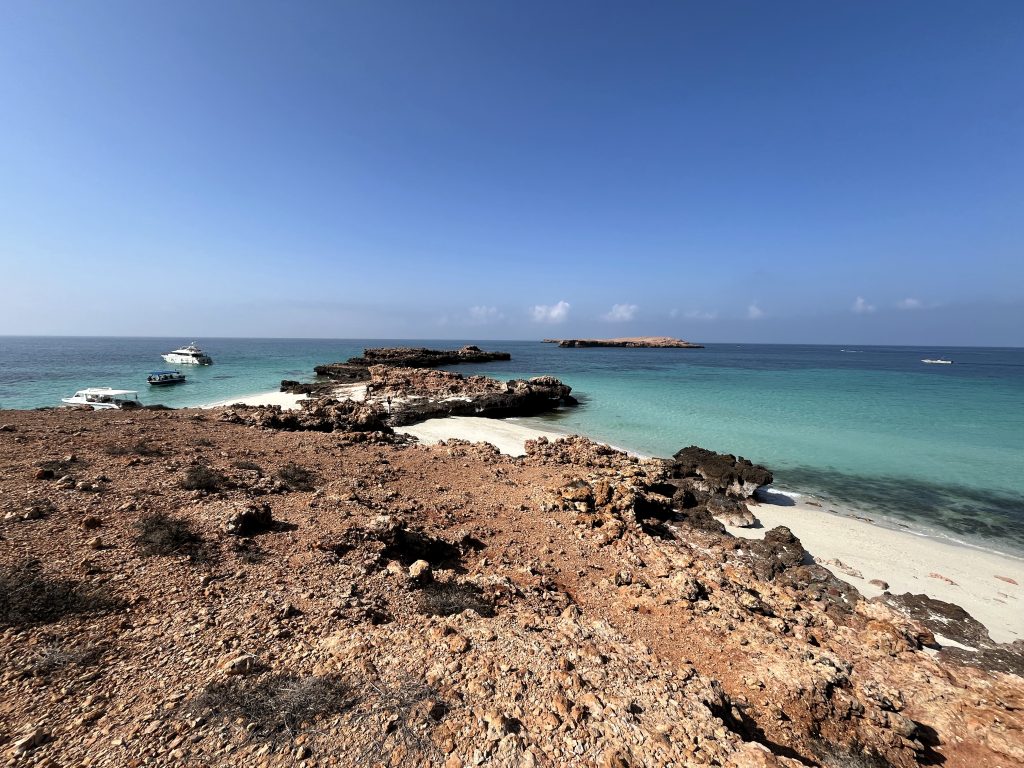
After our return to Muscat in the afternoon, we also visited the Royal Opera House. This cultural landmark is not only a center for music and the arts in Oman. Built in 2011, it is also a stunning example of contemporary Omani architecture. Its elegant white façade, green surrounding parks, and beautiful marble interiors with intricate details make it a must-visit spot. Even if you’re not attending a performance, it’s well worth exploring the interior for the design alone. Including the impressive concert hall.
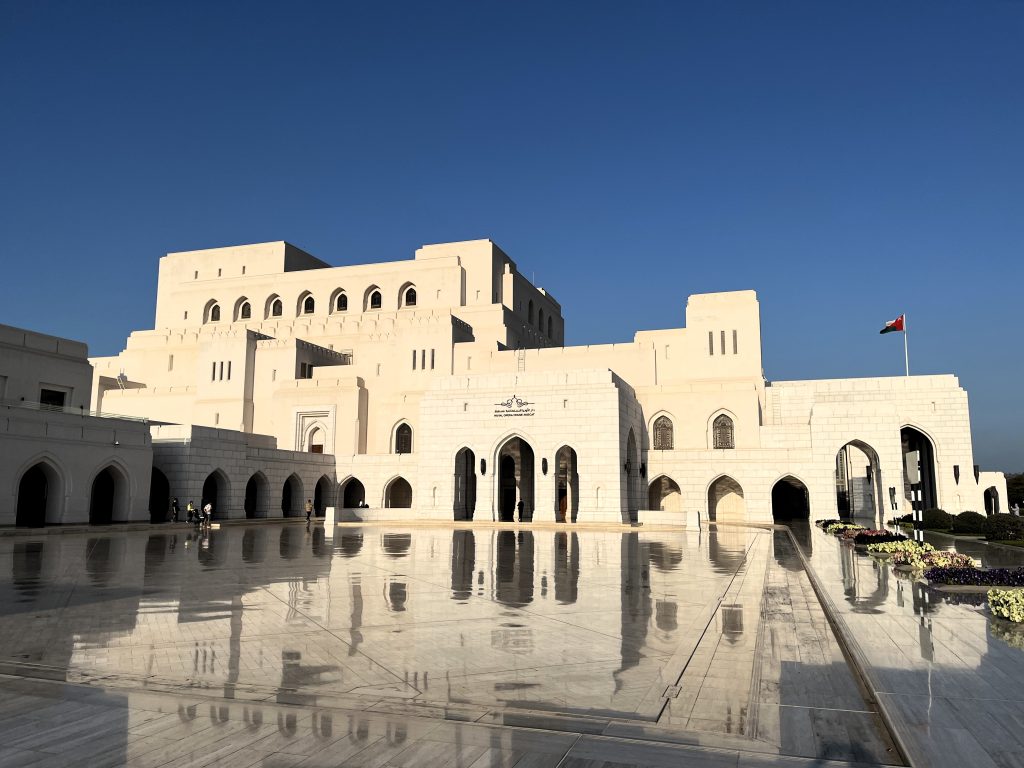
DAY 3: Muscat – Nizwa
After exploring the modern capital, we arrived in the historical city of Nizwa. A place that quickly steals your heart with its charm. Walking along the majestic city walls or strolling on parts of them. Exploring the narrow streets of the old town. Stepping into the vibrant Nizwa Souq, full of pottery, silver jewelry, local crafts, and spices. Nizwa is truly something special. The souq invites you to wander through its colorful shops, which become even more magical under the evening lights. At the center of the city stands the impressive Nizwa Fort. It is home to the largest round tower on the Arabian Peninsula. We climbed to the top for panoramic views of the city, its surrounding palm groves, and the distant mountains. The fort’s inner garden offers a pleasant shade and a glimpse into traditional agriculture. And to our daughter’s delight, there was a friendly camel.
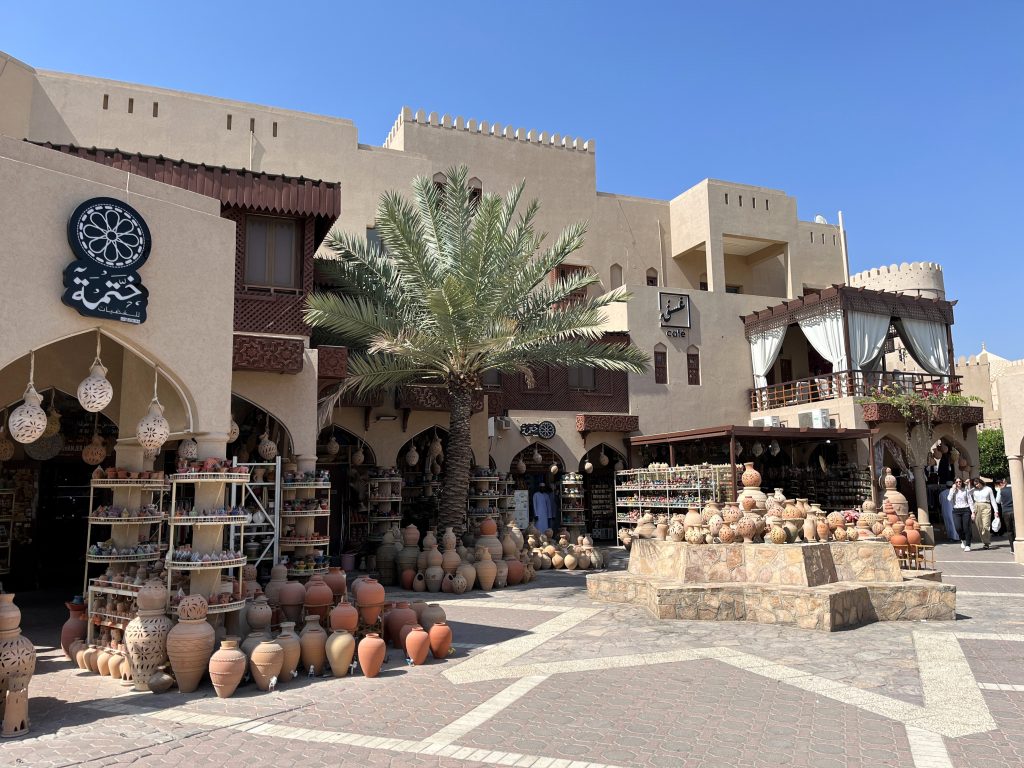
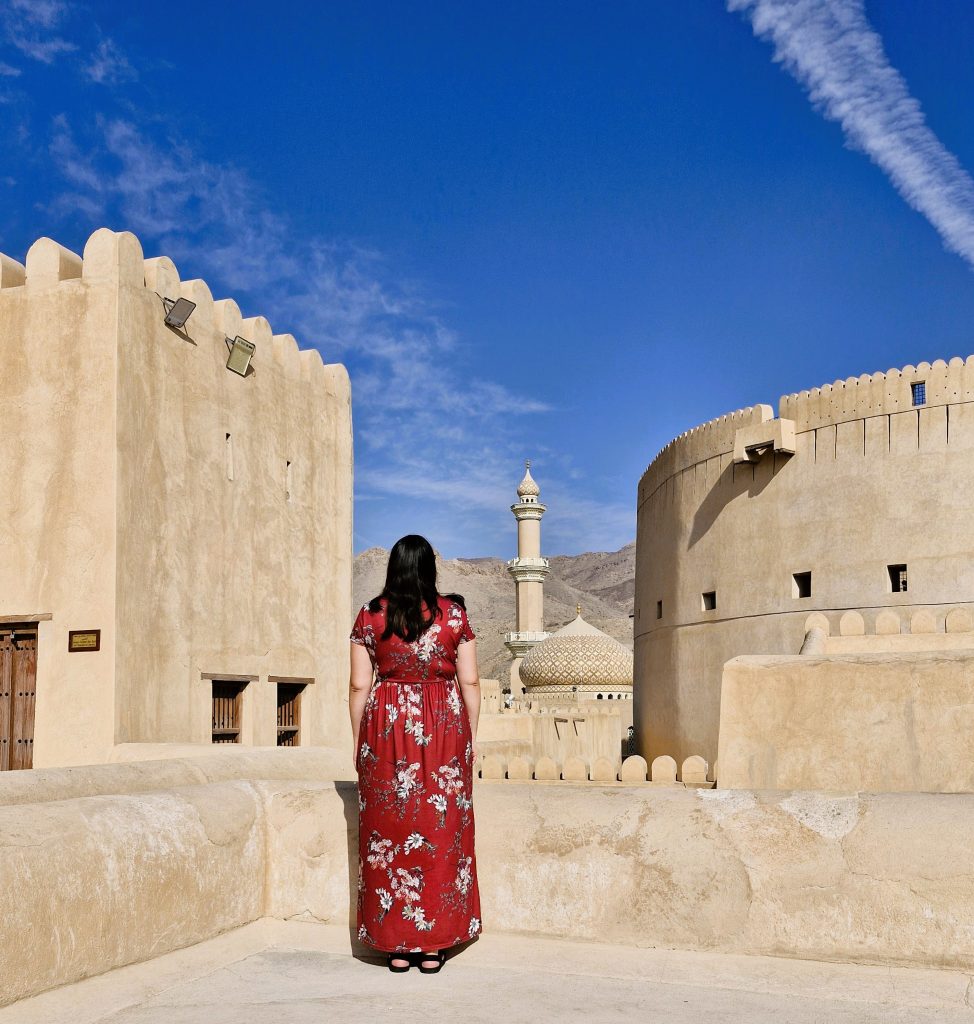
Just a short drive away, we visited Falaj Daris. It’s the oldest and largest falaj (traditional irrigation channel) in Oman, recognized as a UNESCO World Heritage Site. While the falaj system might not look spectacular at first glance, it plays a vital role in sustaining local agriculture. It’s also a popular spot for local children, who splash and swim in its cool waters. There’s a park and playground nearby as well—though we must say, the playground itself has seen better days.
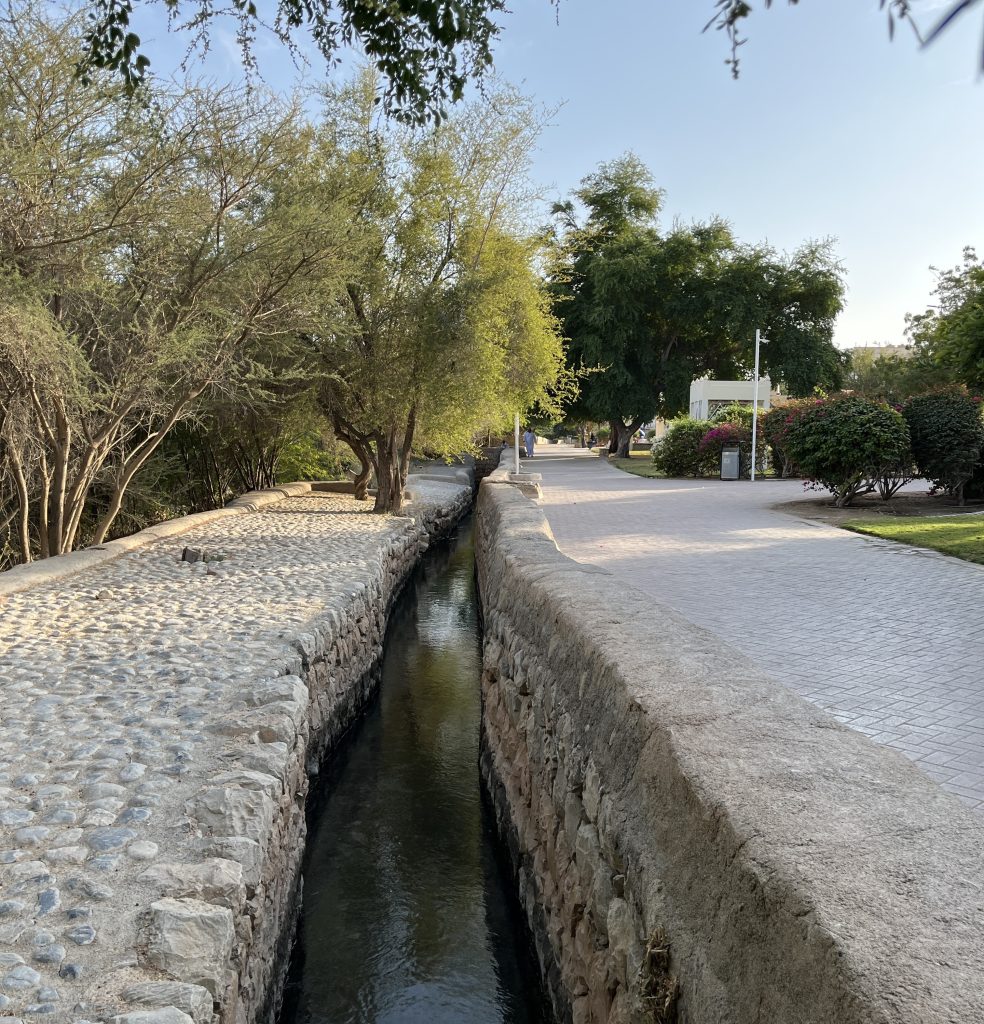
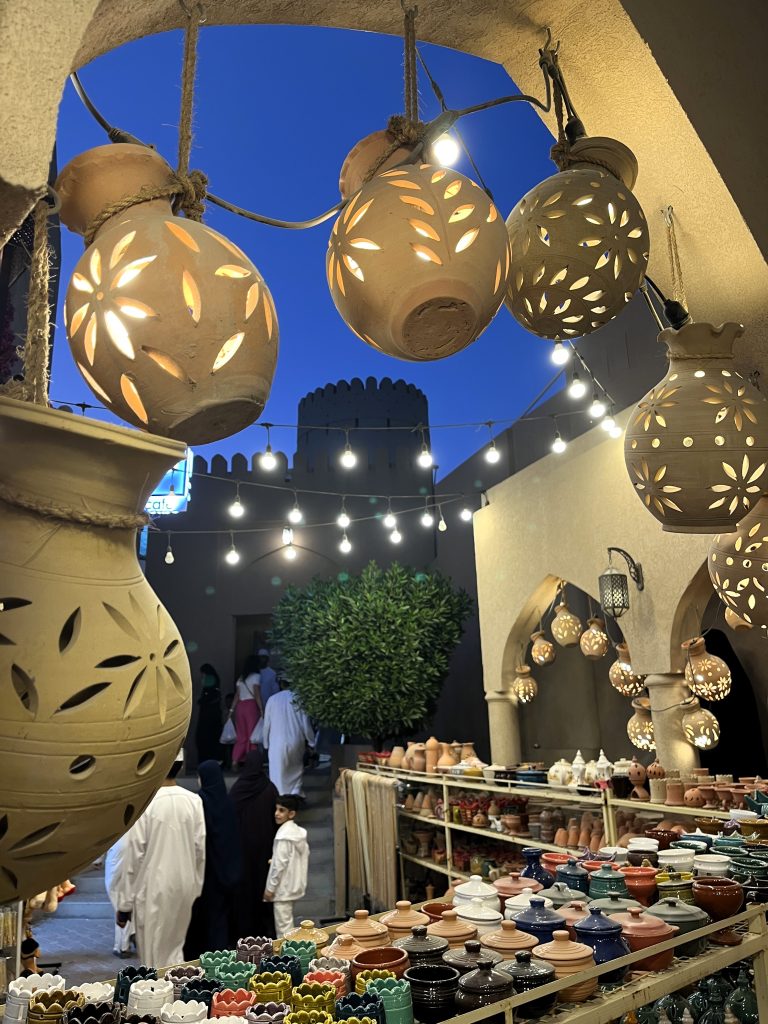
Where to eat/grab a coffee in Nizwa?
We loved:
- Shawathin Coffeshop – Affordable and delicious dishes in a nice setting. Choose a lunch below the shades of old tree or dine with a view on their terrace
- Athar Café – Amazing coffee with the best views of Nizwa Fort and Jamea Al-Qala’a Mosque.
- Café غسق – Little terrace gem above the stalls of Nizwa Souq.
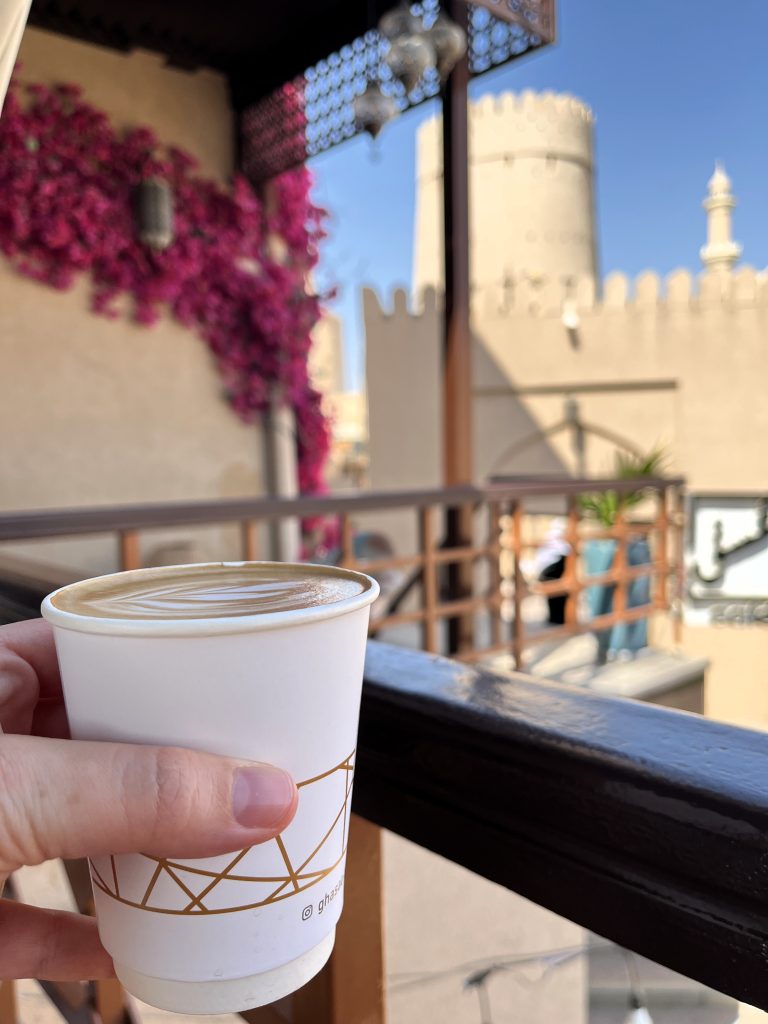
Day 4: Day trip to Misfah al Abriyyin, Bahla Fort and Jabreen Castle
Misfat al Abriyyin feels like a true oasis nestled in the rocky landscape. This traditional mountain village, built from mud and straw, enchants with its maze of narrow alleys, ancient houses, and stunning terraced gardens. Water flows gently through irrigation canals, nourishing banana trees, date palms, and other fruit trees. Several walking paths of varying lengths and difficulty lead you through the lush terraces and surrounding hills. We stopped at Rogan Café for traditional Omani coffee with cardamom and dates. Served with a view of green palm trees. Misfat al Abriyyin was truly a special stop for me on this trip.
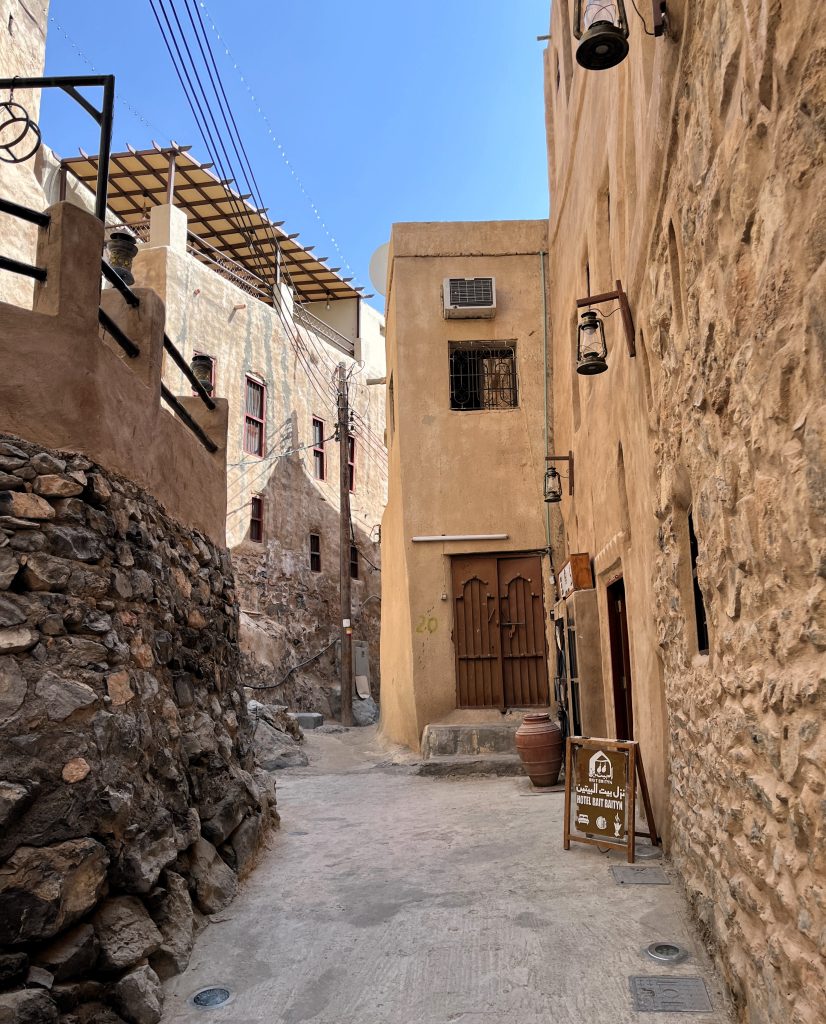
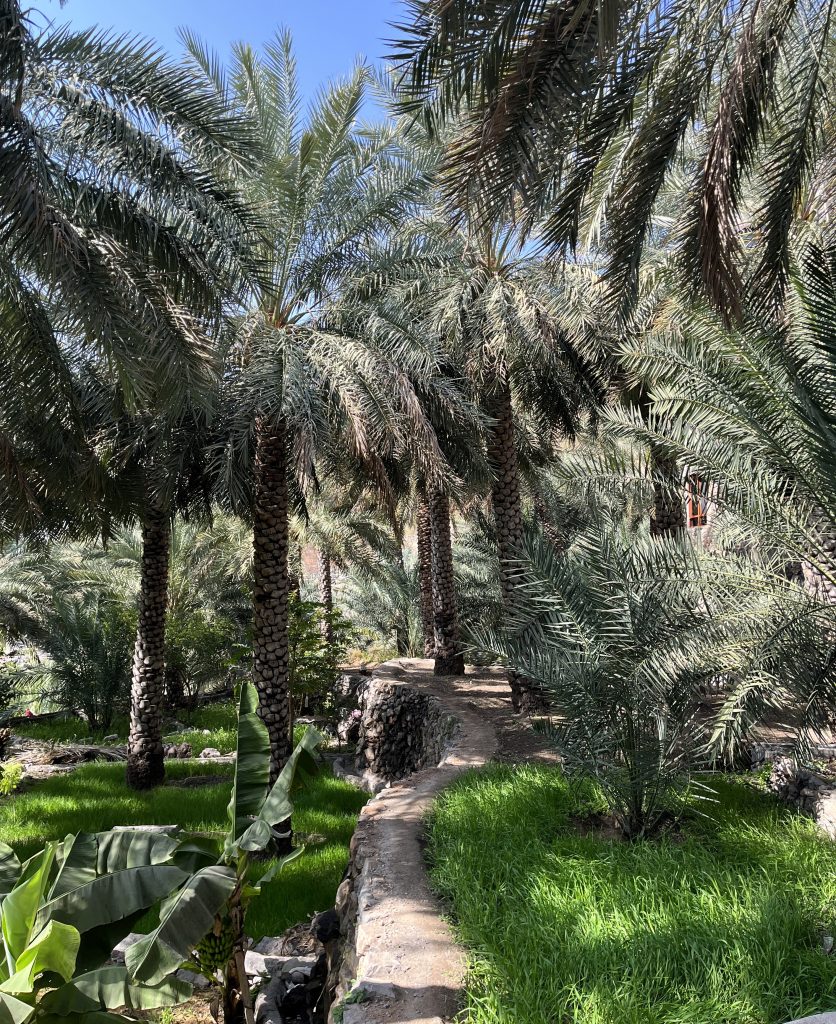
We continued our day with a visit to Bahla Fort. It is one of the oldest and most impressive forts in Oman, and a designated UNESCO World Heritage Site. The fort dates back to the 13th century. Built mainly from mud bricks, it is surrounded by a 12-kilometer-long wall and sits beneath the backdrop of the Hajar Mountains. Although partially in ruins for many years, it has undergone restoration and now offers a glimpse into Oman’s medieval architecture.
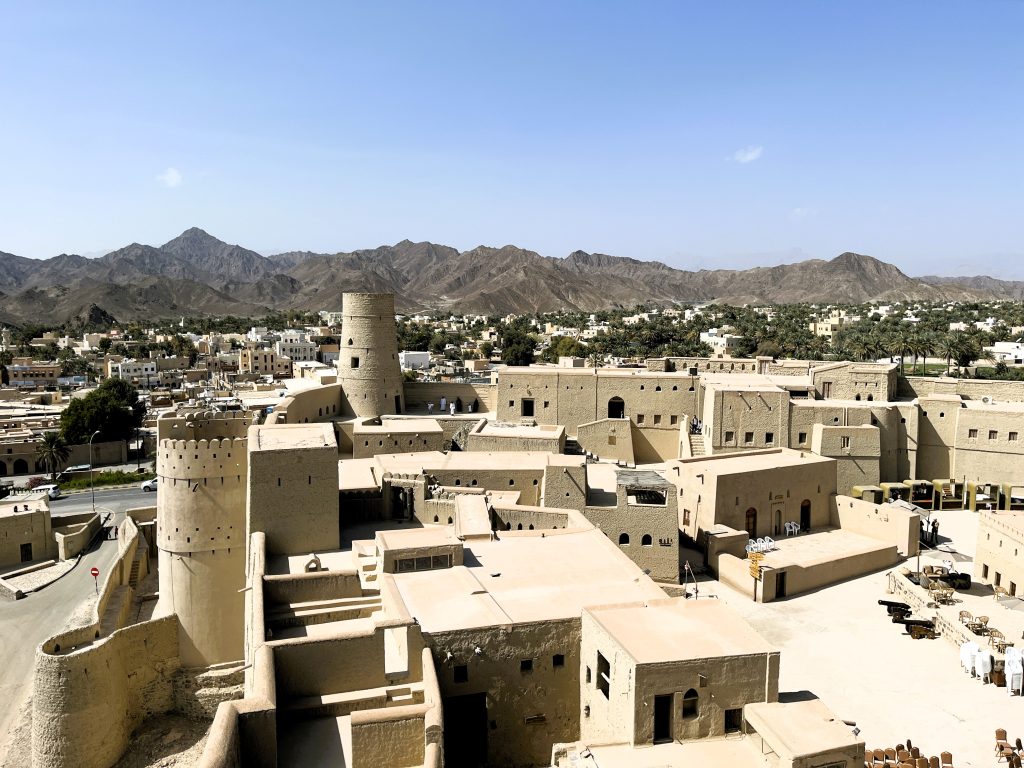
Not far from there, we explored the beautifully restored Jabreen Castle, one of the finest examples of Omani castle architecture. Built in the late 17th century, Jabreen was not just a defense castle but also a center of learning and culture. The castle features ornate wooden ceilings, decorative arches, secret passageways, and even a dedicated library and classrooms. You can also have a coffee with the view of the castle on site.
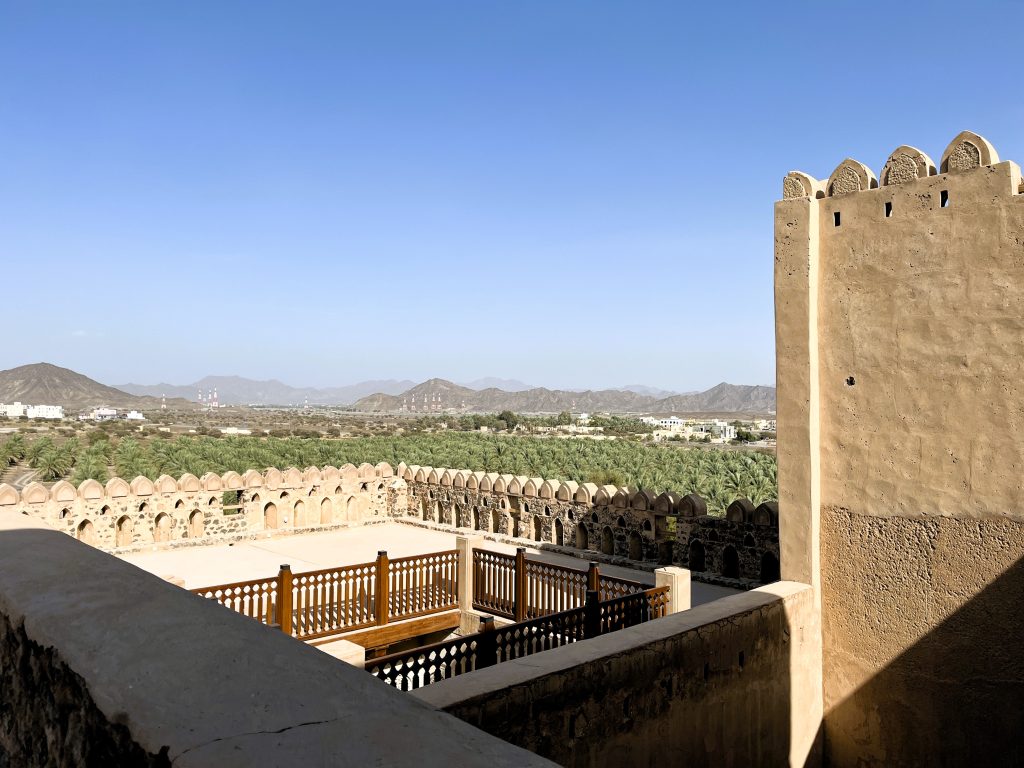
Day 5: Nizwa – Wahiba Sands
After leaving Nizwa, we headed into the desert, to Wahiba Sands. Here we stayed in one of the camps, tucked among the golden dunes in a cozy little house. The camp arranged a 4×4 transfer for us, as the ride across the sand would have been too much of an adventure for our “normal” car. After refreshing on our house’s terrace, we set off to climb the dunes. Reaching the top was no easy task. The soft sand made every step a challenge—but the reward was more than worth it: breathtaking, endless views in every direction. We watched the sunset from the dune’s peak, with camels peacefully passing by. Quite a scene straight out of a postcard.
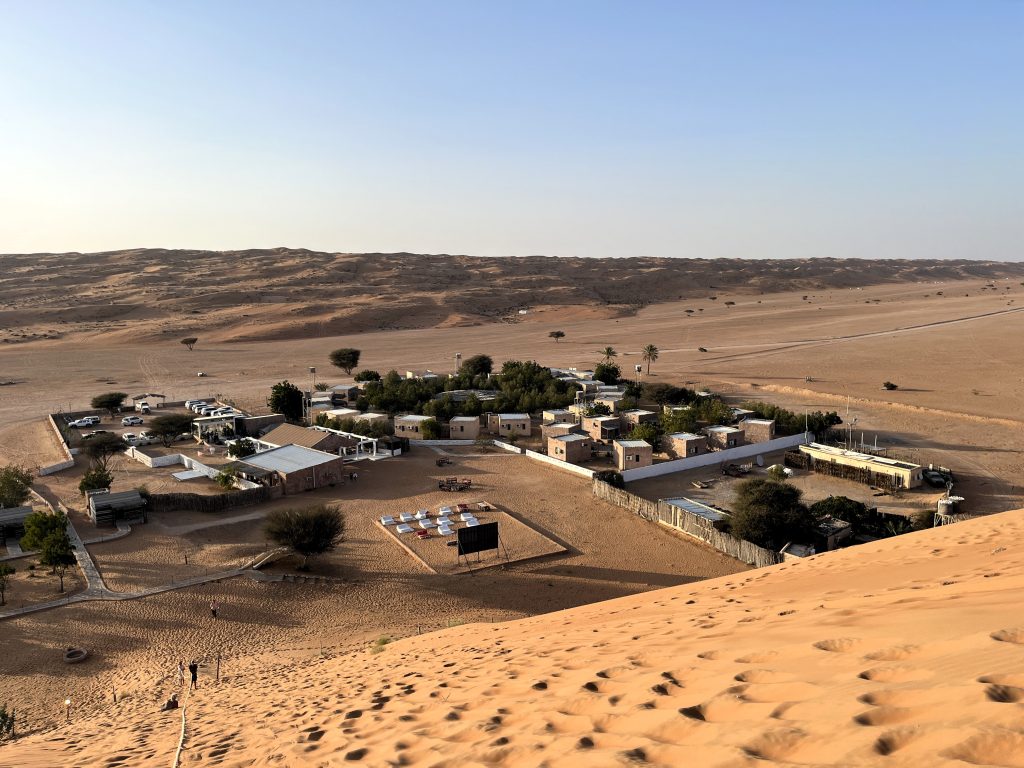
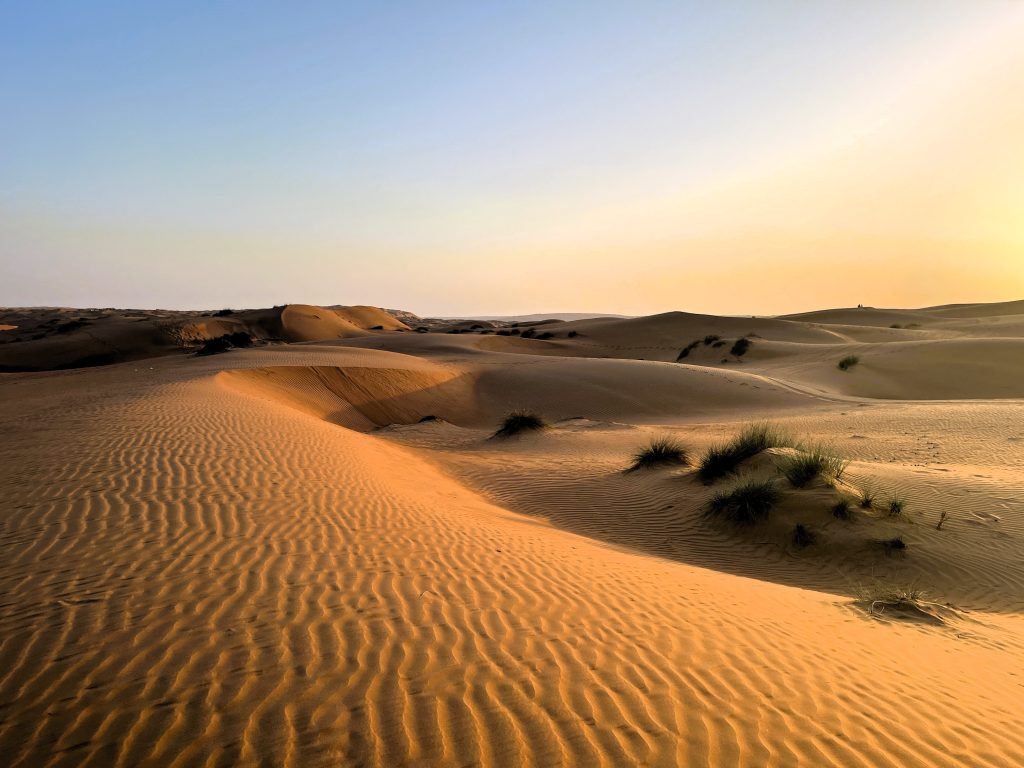
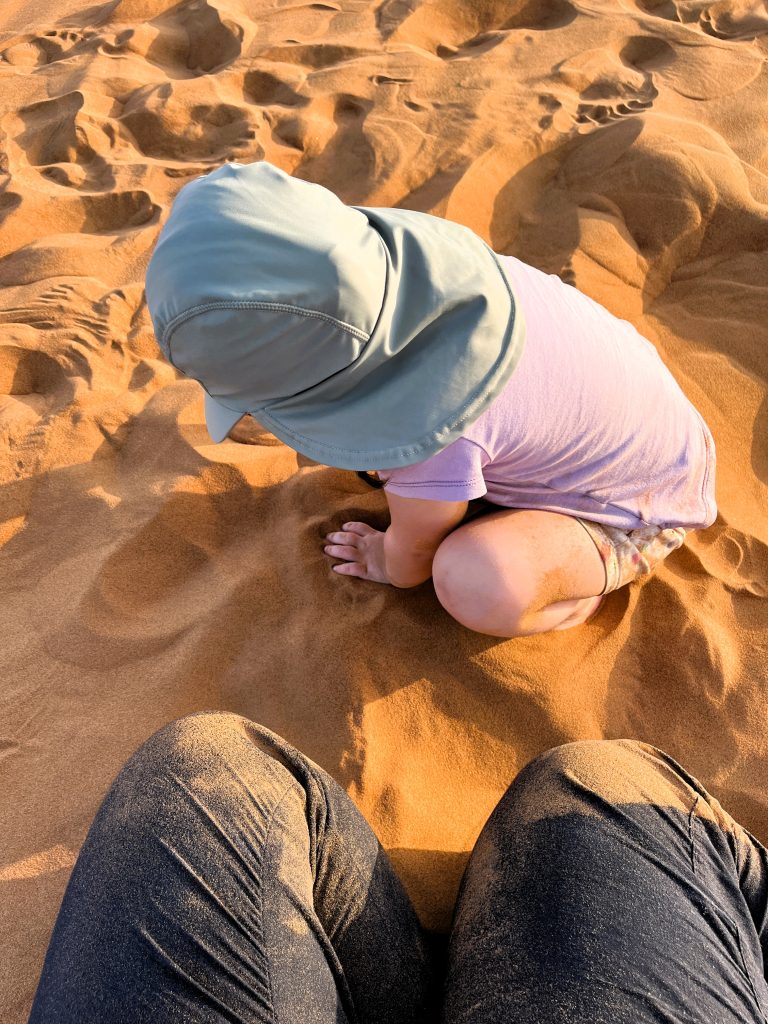
Back at the camp, we enjoyed a delicious traditional Omani dinner. Including the chance to try camel meat for the first time. The camp also had an open-air cinema beneath the dunes, but tired as we were, we opted for an early night. Our stay in Wahiba Sands was truly an unforgettable experience.
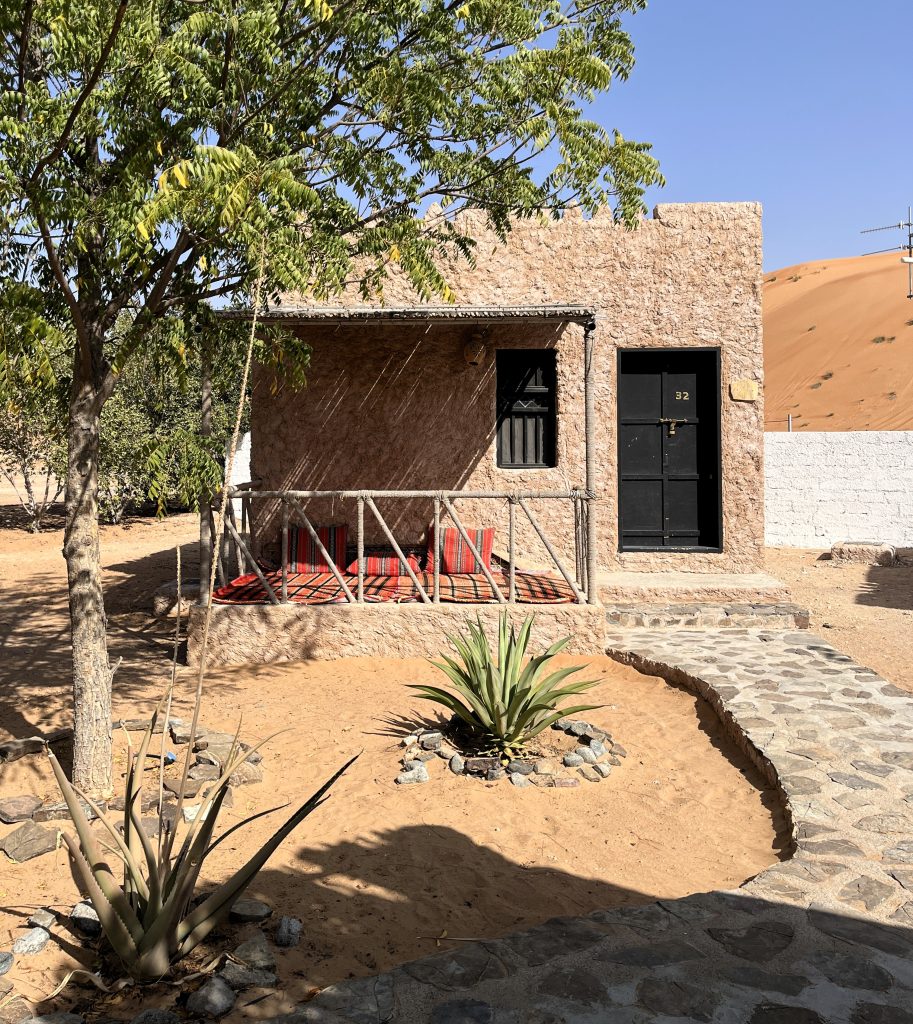
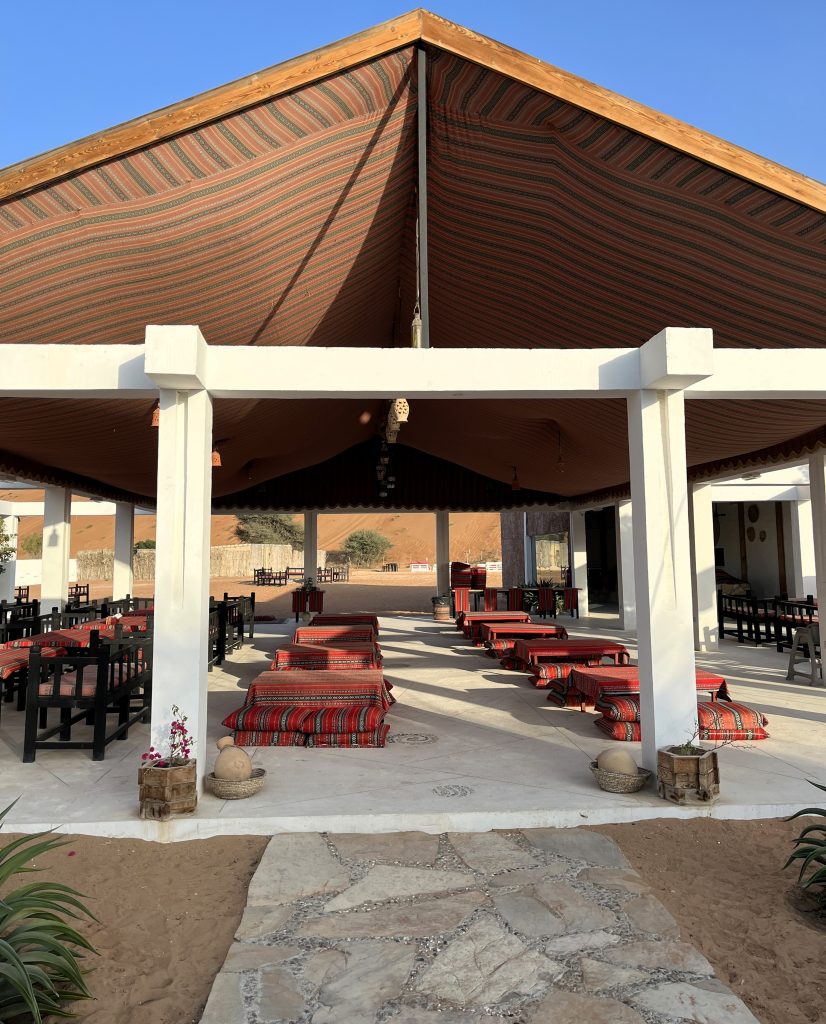
Day 6: Wahiba Sands – Wadi Bani Khalid – Sur
Our next stop was Wadi Bani Khalid, one of the most popular wadis in Oman—and for good reason. Just a few minutes’ walk from the car park, we reached the first large natural pool but didn’t stop there. We continued along a steep path beside the rocks, venturing further into the gorge where the scenery became even more beautiful. The trail ends at a small cave with a natural spring. Along the way, we passed a series of warm water pools carved into smooth rock formations. The water was crystal clear and inviting, and Gaja loved playing with the rocks in the water.
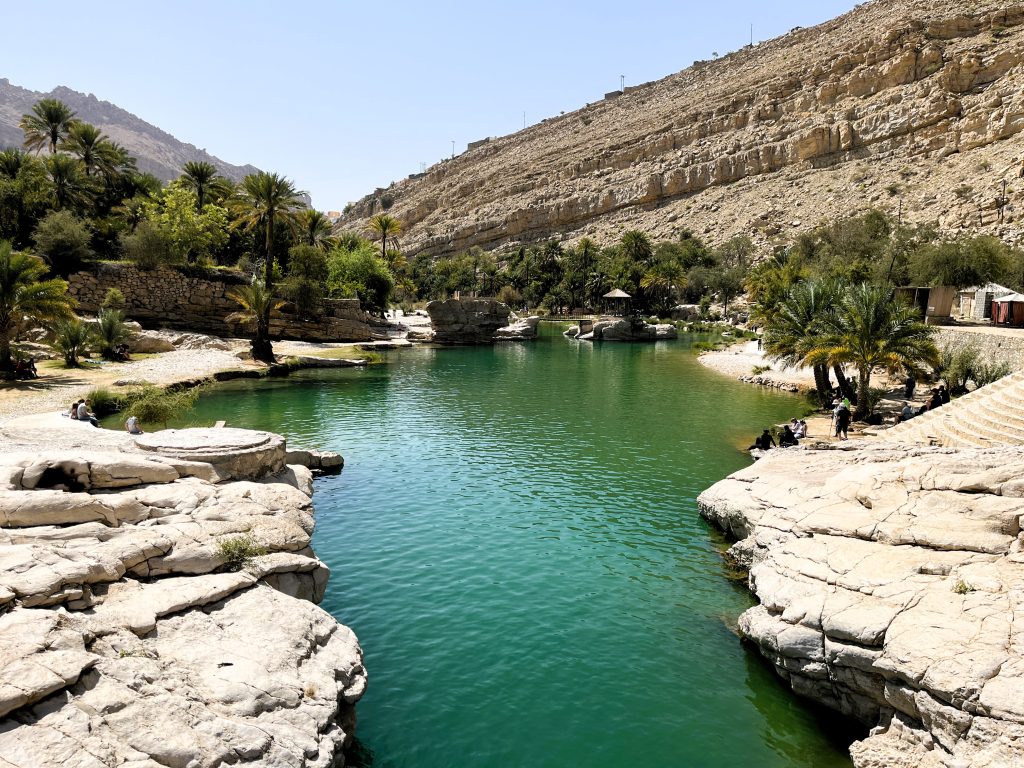
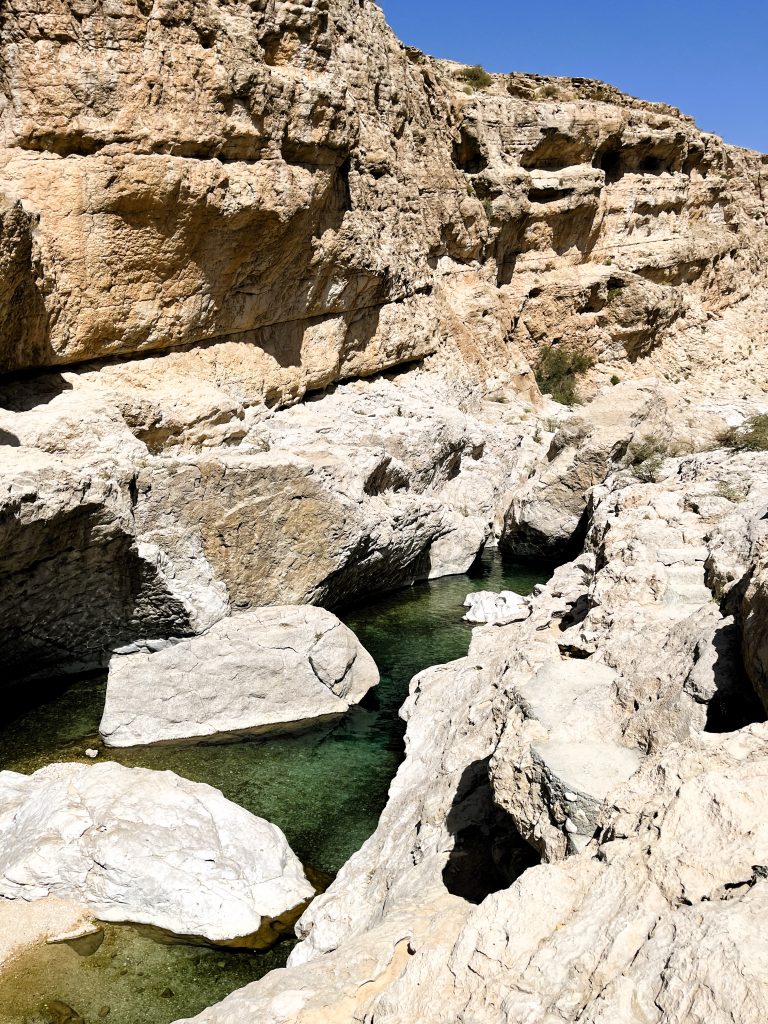
In the evening, we arrived in Sur. We took a relaxing walk along the seafront promenade—after first visiting a playground, of course.
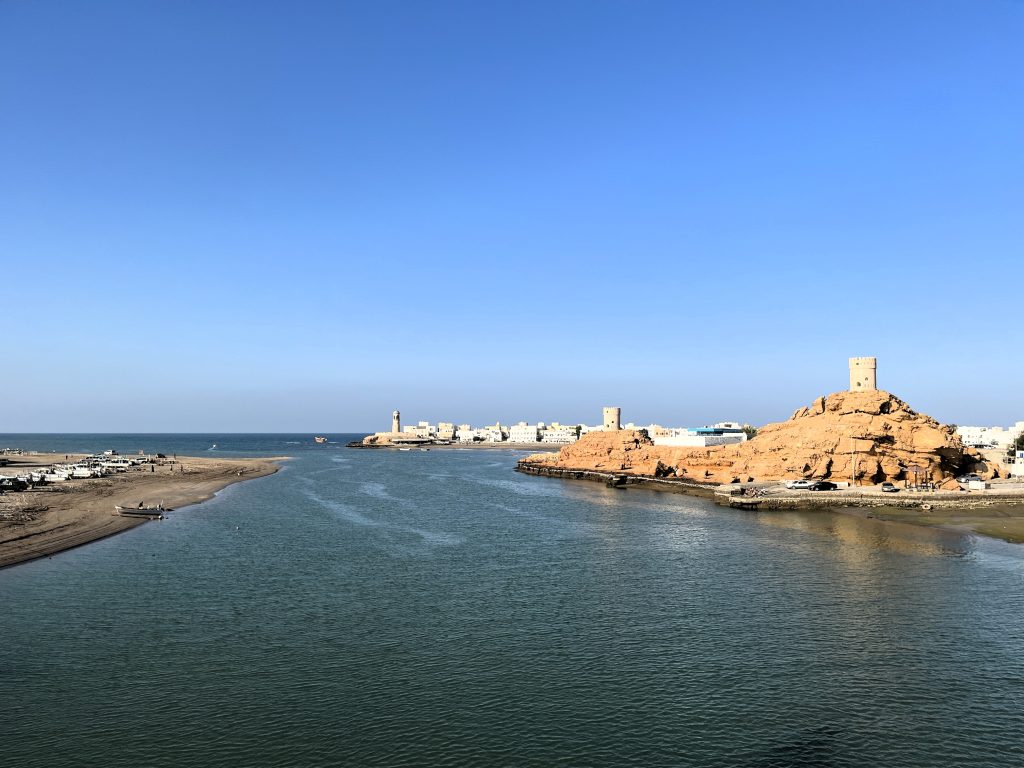
Day 7: Sur
We decided to have a beach day and found an amazing spot just outside Sur on the map. However, although the beach from above looked dreamy, we were disappointed when we descended to it. We discover that was unfortunately littered with trash, even though the sea itself was very clear.
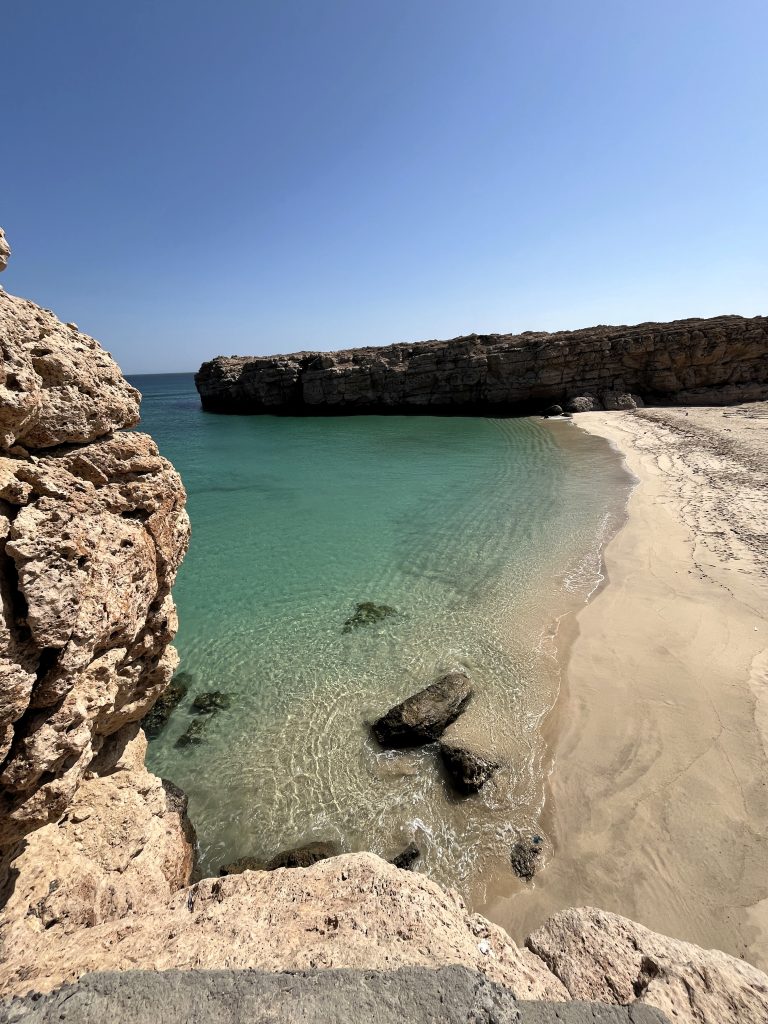
We spent the afternoon exploring the city. Including a visit to a dhow factory, where we learned about traditional shipbuilding and even explored the inside of a dhow. Afterwards, we strolled along the Sur corniche and wandered through the Al Ayah neighborhood, where we saw the lighthouse. We also visited the local souq. To be honest, Sur felt quite neglected and littered, which left a less-than-favorable impression on us.
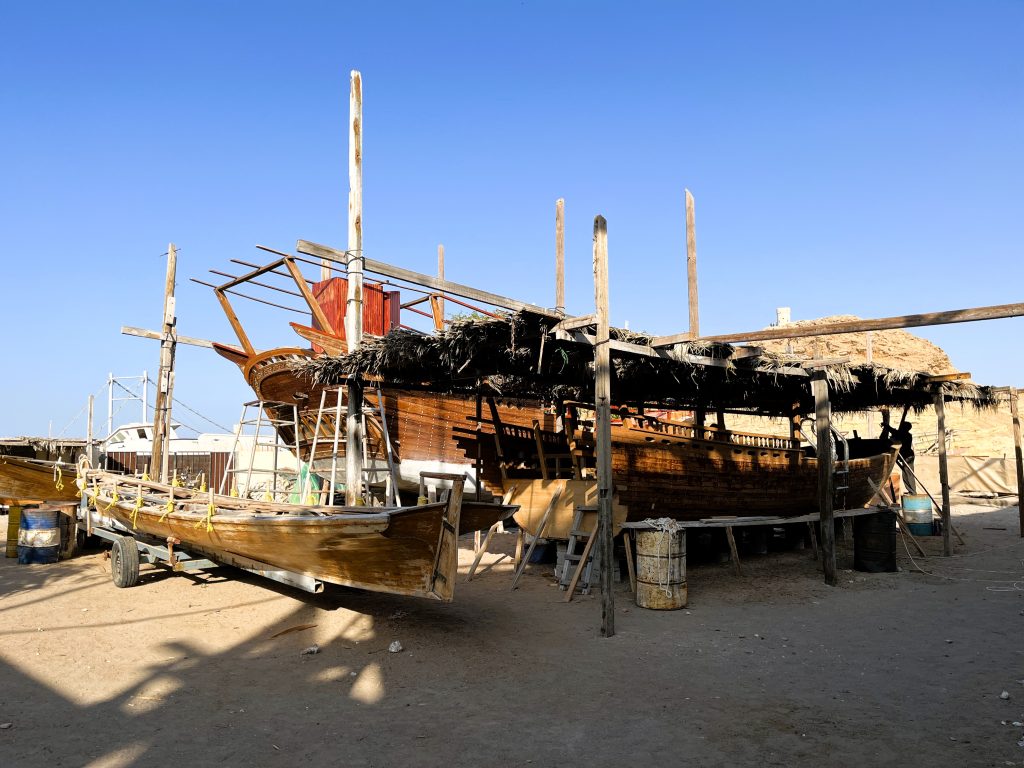
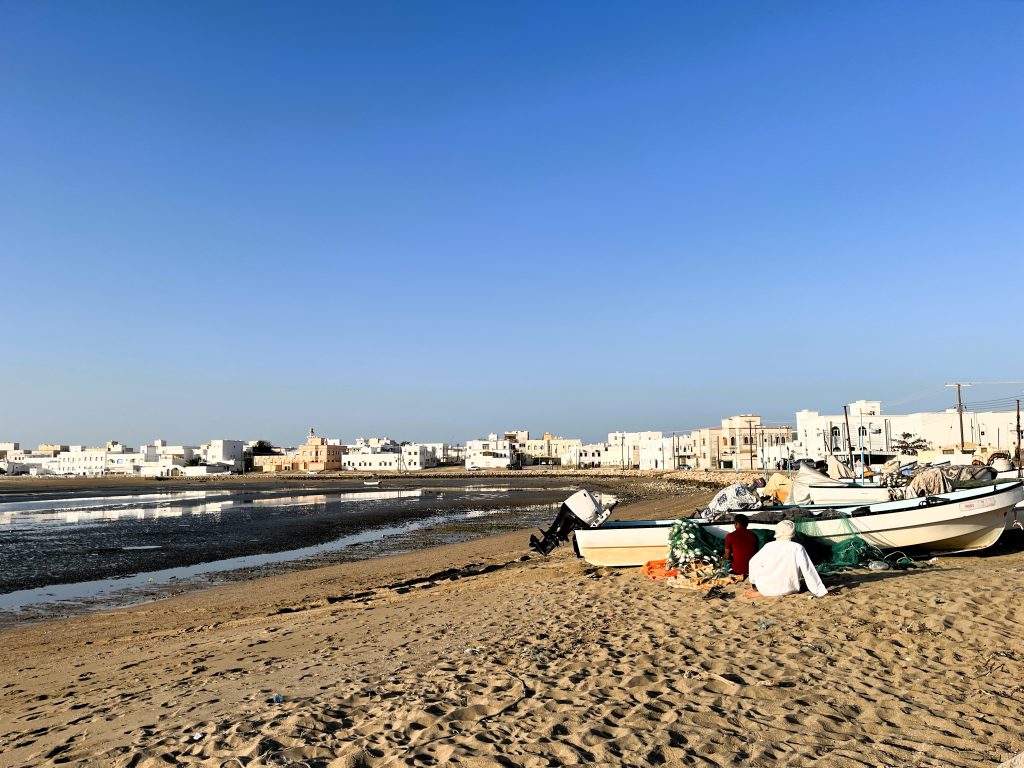
Day 8: Sur – Wadi Shab – Bimmah Sinkhole – Muscat
After a short drive, we boarded a 2-minute boat ride to the entrance of Wadi Shab. The ride was followed by a 45-minute walk along the water. The trail had some challenging and sometimes slippery sections, so caution was needed. The effort was well worth it. Wadi Shab revealed beautiful green pools perfect for swimming, though the water was quite cold. It’s possible to swim all the way to the end of the wadi, where a cave awaits. Since Wadi Shab is not overly touristy, we loved relaxing on a small, quiet beach along the way.
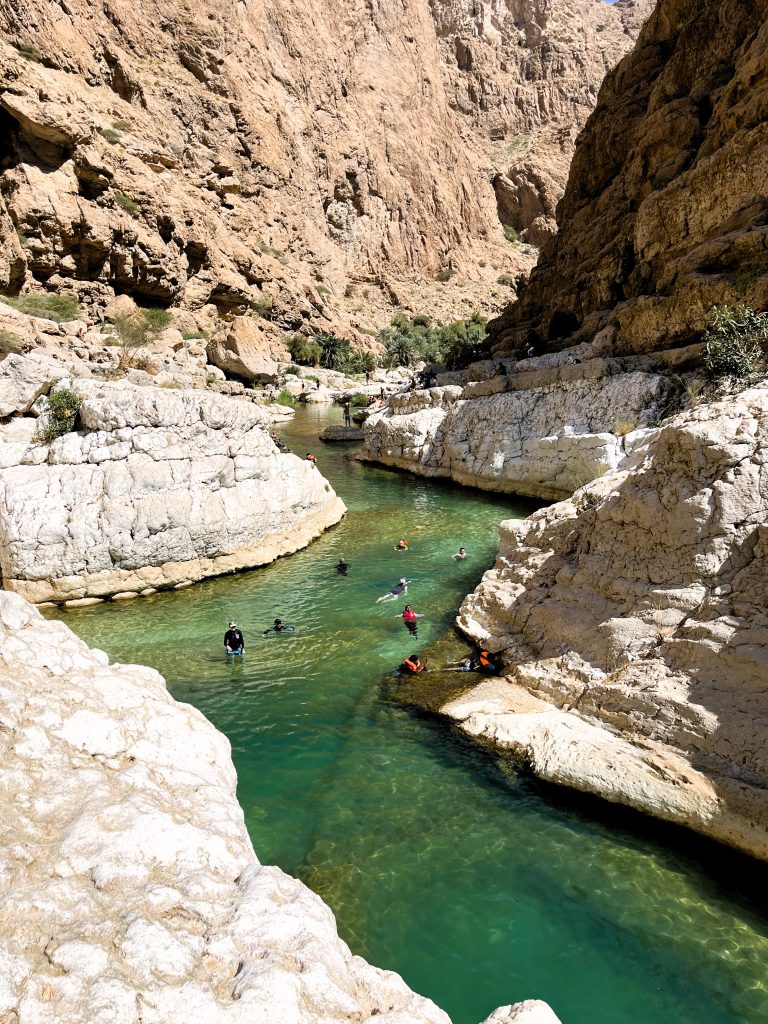
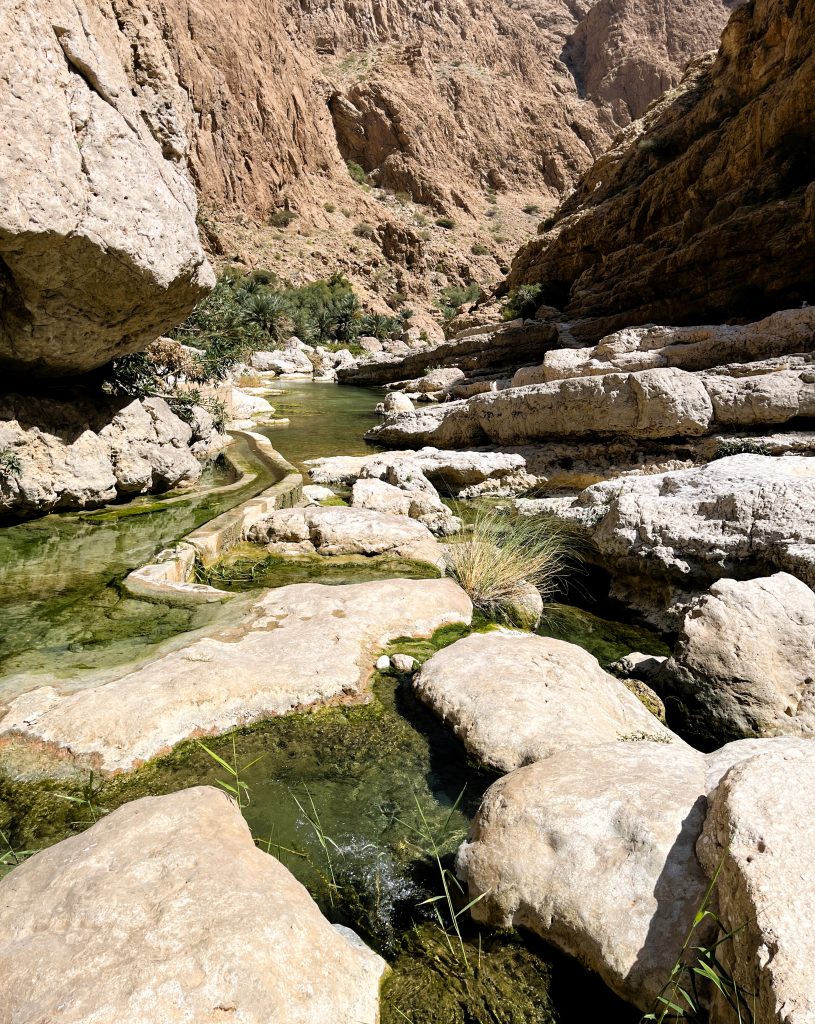
Next, we made a quick stop at the Bimmah Sinkhole, a natural limestone crater filled with turquoise water. This interesting geological formation is believed to have been created by a meteorite impact or natural erosion. The surrounding Hawiyat Najm Park includes also a fun playground area for children. We arrived back in Muscat in the evening, wrapping up an adventurous and refreshing day.
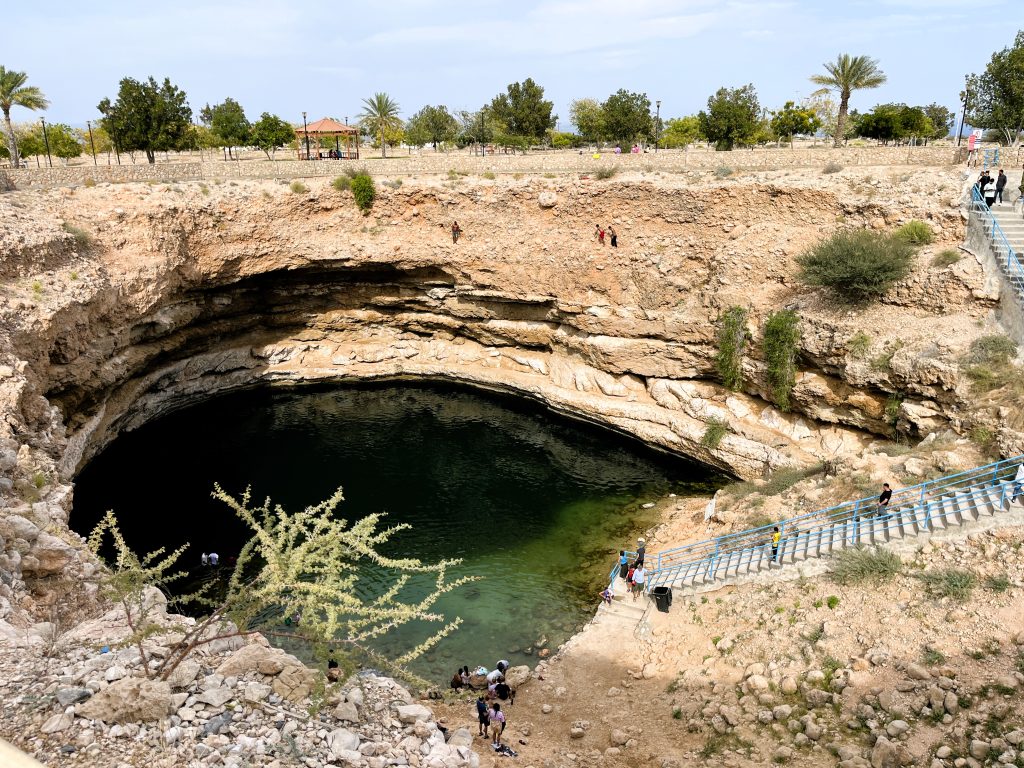
Day 9: Muscat
Our final day began with a visit to the magnificent Sultan Qaboos Grand Mosque. The building it’s an architectural masterpiece and the only mosque in Oman open to non-Muslim visitors. It is the second largest mosque in the world, famous for its stunning design. Including a massive chandelier that was the largest in the world when it was built. The beautifully landscaped gardens surrounding the mosque add to its impressive atmosphere. Visitors should be mindful of the opening hours and dress code when entering this site.
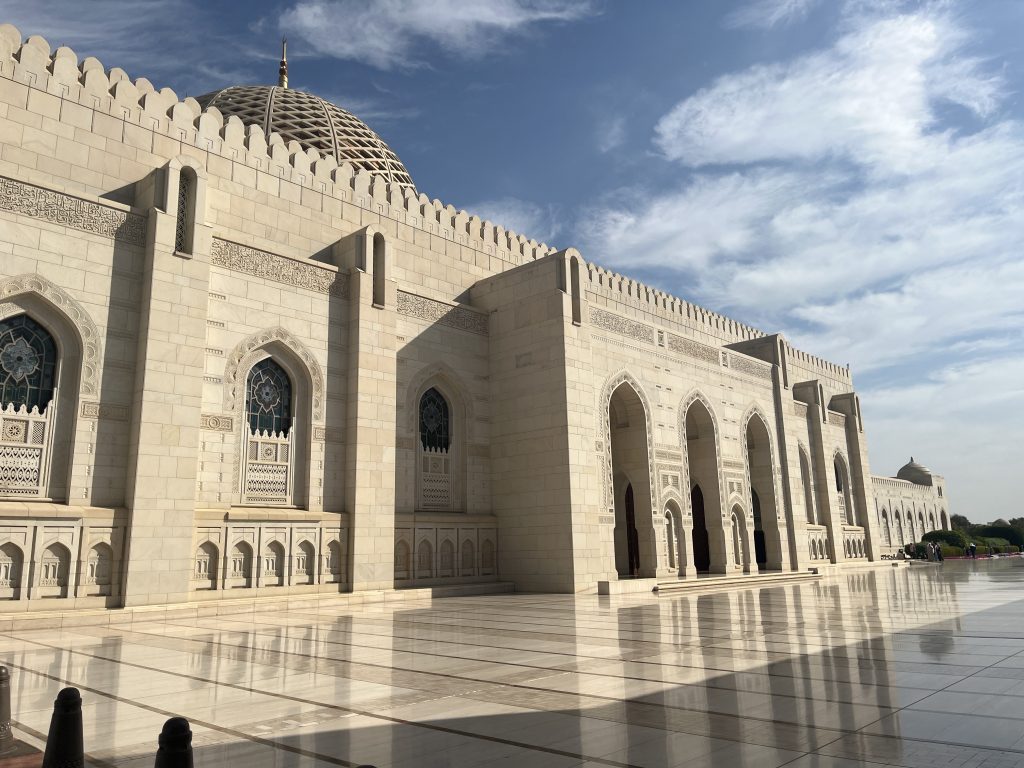
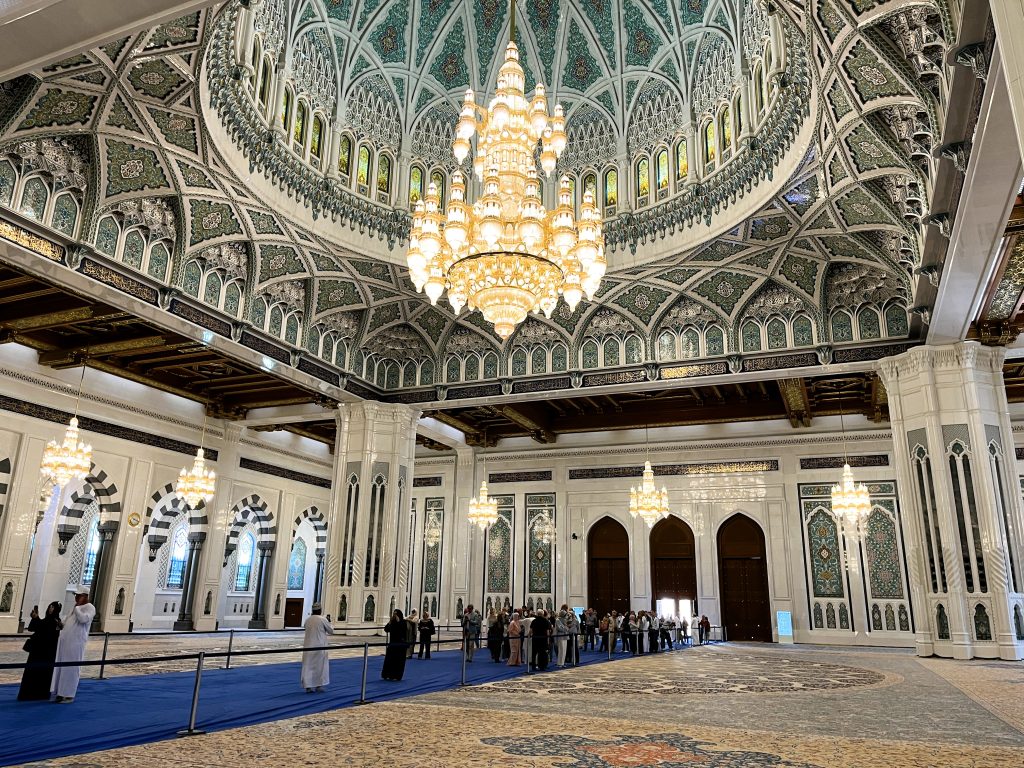
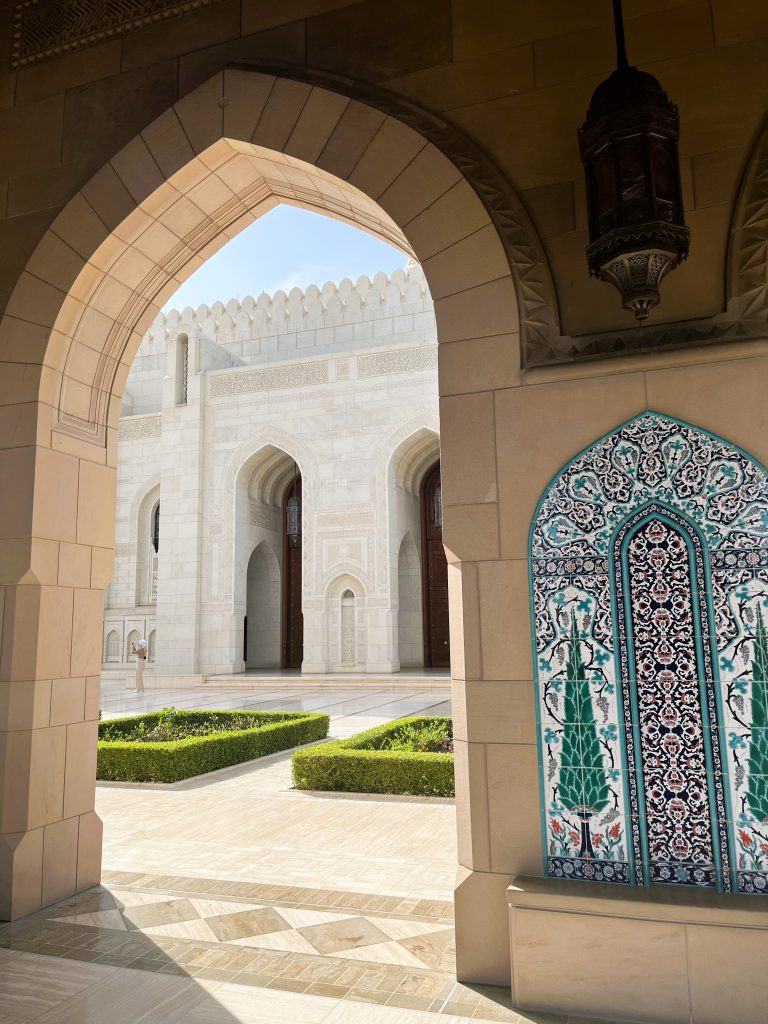
Next, we visited the Children’s Public Library, which features a lovely play area for kids, though quietness is strictly enforced. From the library, we enjoyed views of the nearby Qurum Nature Reserve, a green oasis in the city.
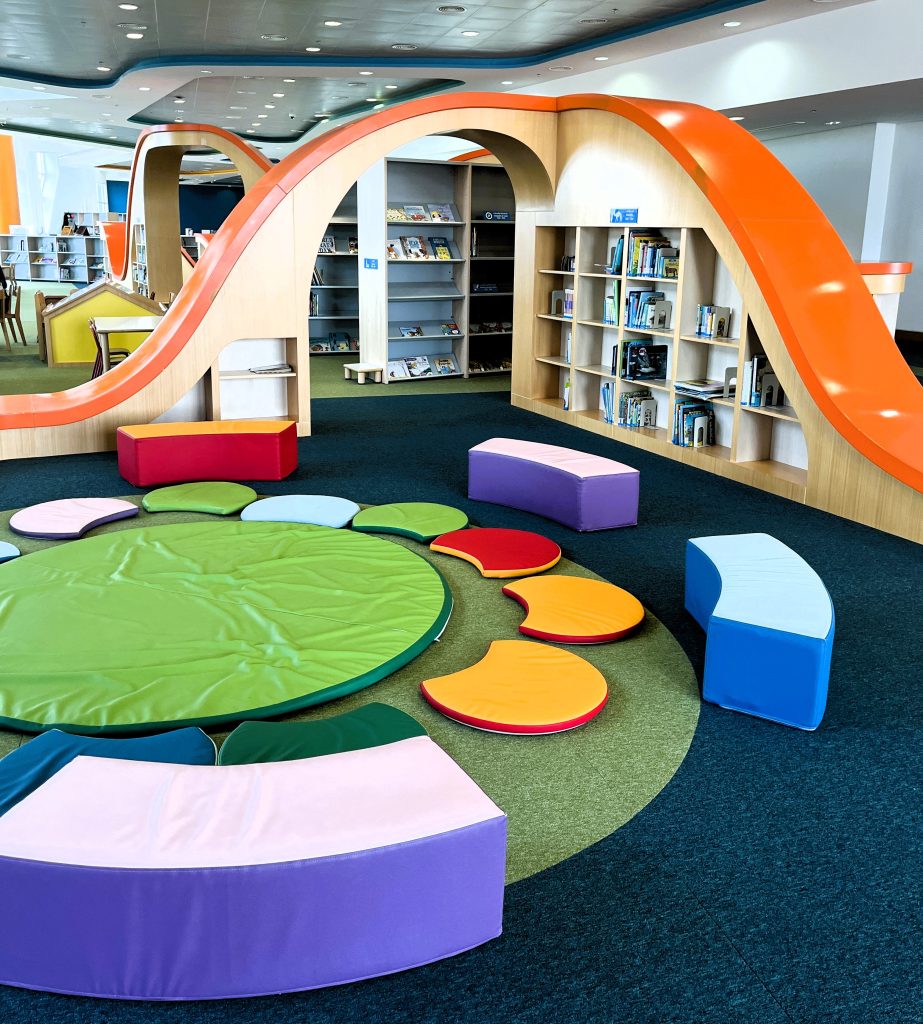
We also stopped by Al Alam Palace, the ceremonial palace of the Sultan of Oman. And admired views of the two nearby historic forts. Near our hotel, we discovered a nice playground, perfect for a bit of fun before our journey home. That night, we took our flight back, concluding an unforgettable trip to Oman.
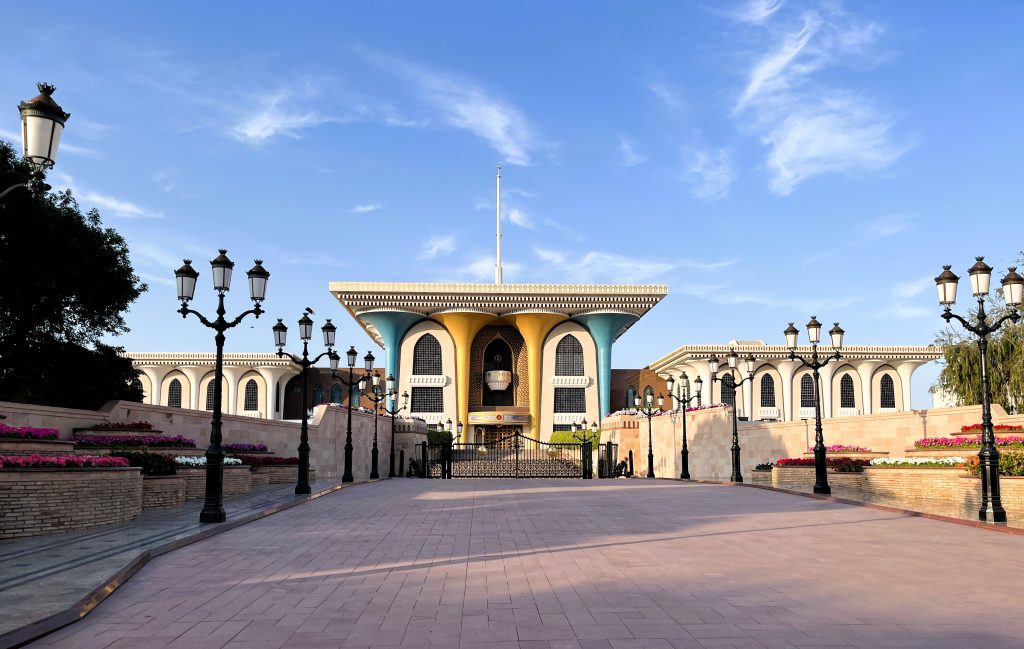
Visited: February 2025
